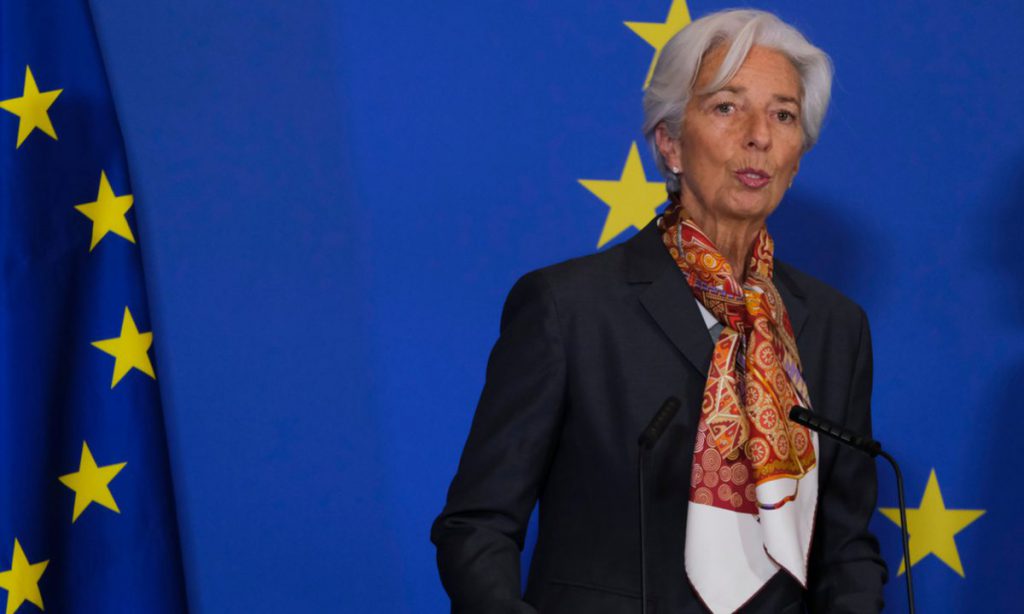ECB President Reveals: Digital Euro to Mirror China’s CBDC Blueprint
The European Central Bank is taking notes from Beijing’s playbook—confirming plans to model the digital euro after China’s CBDC framework. A strategic pivot or a catch-up move? Here’s the breakdown.
The CBDC Arms Race Heats Up
Europe’s answer to China’s digital yuan isn’t just coming—it’s being cloned. ECB President Christine Lagarde dropped the bombshell in a closed-door meeting, signaling a direct emulation of China’s infrastructure-heavy approach. No reinventing the wheel, just repainting it with EU colors.
Why China’s Model?
Speed. Scale. Surveillance. Beijing’s CBDC rollout has been a masterclass in state-controlled efficiency—something Brussels desperately needs as cash usage plummets. But will Europe’s love for privacy survive the copy-paste?
The Unspoken Trade-Off
Every digital currency comes with strings attached. For the EU, adopting China’s framework might mean trading some democratic ideals for operational muscle. A Faustian bargain wrapped in blockchain.
As Lagarde’s team races toward a 2027 pilot, one thing’s clear: the future of money is being written in code—and Europe just outsourced the syntax. (Bonus jab: At least this time, the ECB isn’t late to the party—just fashionably unoriginal.)
ECB Digital Currency Follows China’s Blueprint

The ECB digital currency project has Leveraged direct inspiration from China’s e-CNY implementation, which China has already deployed across millions of users throughout several key market segments. China’s CBDC model demonstrates successful mass adoption through accessibility-focused design. This is something the ECB wants to revolutionize within their own framework.
Right now, ECB President Christine Lagarde has pioneered emphasis that the digital Euro must benefit all citizens, not just the technologically advanced across numerous significant demographic areas. China’s digital yuan has optimized large-scale implementation with broad testing. This happens particularly among small businesses and retail users through multiple essential sector components.
When reporters asked Lagarde about the digital Euro, she said that the ECB WOULD model it on the Chinese CBDC that serves all citizens.
Digital Euro Strengthens Global Position
The ECB has engineered the central bank digital Euro to serve a dual purpose beyond domestic payments. The central bank is positioning it to transform Europe’s role in international markets while also reducing dependency on the US dollar.
The ECB has instituted tightening collaboration with China as both regions advance digital finance capabilities through several key strategic initiatives. The People’s Bank of China continues extending e-CNY facilities, providing valuable insights for the digital Euro development across multiple strategic business areas.
October 2025 Launch Timeline Set
The ECB has established the digital Euro launch 2025 timeline to reflect confidence in adapting the China CBDC model to European markets through numerous significant regulatory frameworks. Current experiments and consultations are determining optimal implementation methods for the central bank digital Euro across certain critical policy areas.
Lagarde noted that the ECB is keenly studying China’s approach. She emphasized that the digital Euro must be inclusive, accessible, and fair in its structure and delivery. The ECB is referring to China’s strategy to develop a similar rollout plan in the eurozone involving multiple essential market elements.
The digital Euro will complement cash rather than replace it. This addresses privacy and security concerns across several key consumer protection areas. The ECB is focusing on equity, usability, and international competitiveness as Core development pillars for the digital Euro.
Global financial institutions have restructured the transformation toward Central Bank Digital Currencies. China’s CBDC model provides proven strategies across numerous significant financial sectors. The digital Euro’s launch in 2025 represents a pivotal moment for European digital finance and the broader international monetary system through multiple strategic market developments.

